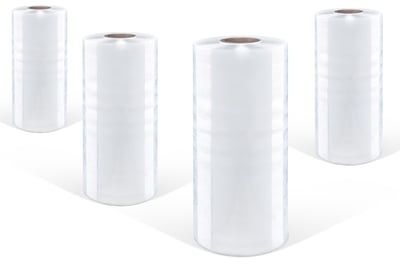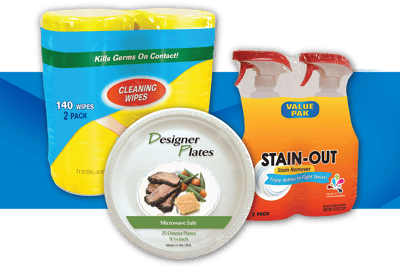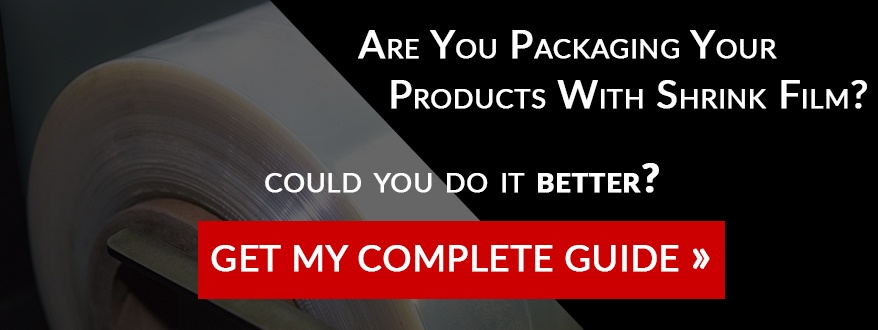Clear Shrink Wrap VS Printed Shrink Film: Which Is Right For You?
When choosing a shrink film for your product packaging, there are many things you need to consider before selecting a film.
These items may include the gauge of film that is best suited for your products, as well as the formulation of shrink film that would be most appropriate for your applications.
You may want a glossy sheen on your film to help catch the eyes of consumers, or perhaps you require a less reflective material for one reason or another.
And, while there are many questions that you will need to answer before you make a purchase, one of the most critical questions you need to ask yourself is, do you want transparent shrink wrap or printed shrink film?
Printed shrink film and clear shrink wrap have many similarities and can be used for some of the same applications. But, you will want to make sure that you choose the film that is best suited for your unique packaging requirements.
So, which is right for you? Clear shrink wrap or printed shrink film? In today's article, we are going to help you answer this question.
With over 65 years in the packaging industry, we know shrink film like the back of our hands. We have helped thousands of customers choose the correct type of shrink film for their packaging needs.
And, we can do the same for you.
After reading this article, you will have everything you need to decide if clear shrink wrap or printed shrink film is the right choice for your business.
What Is Clear Shrink Wrap?

Traditional clear shrink wrap (more commonly known as shrink film) is a thin packaging substrate that is generally made from one of three main plastic formulations.
These include polyvinyl chloride (PVC), polyethylene (PE), and polyolefin (POF). Each formulation has specific properties that make them the correct choice for the applications they are being used for and the products they are packaging.
For example, the best type of shrink film for packaging food is polyolefin.
Clear shrink wrap comes as a long flat sheet of plastic that is wound onto a cardboard core. These films are available in different lengths, gauges, and widths. The application you are using your film for will dictate what length, width, and gauge are best suited for your products.
What Is Printed Shrink Film?

Printed shrink film is similar to clear shrink film. But, it is usually made of polyolefin or polyethylene. Polyethylene printed shrink films are thicker than polyolefin. Polyolefin, however, tends to result in a tighter shrink.
Printed shrink films are printed with eye-catching graphics and typography. They are commonly used to entice consumers with colorful imagery that blends marketing verbiage, pricing, ingredients, warnings, and other important product information.
It should be noted that printed shrink film almost always has minimum order requirements. As such, it may not make sense from a financial standpoint for low-volume applications.
Generally speaking, the minimum order requirement for printed shrink film is around 50,000 impressions. An impression is the length of film required to wrap one bundle.
As every design is different from one brand to the next, printed shrink film pricing is extremely case-sensitive. If you are interested in getting an exact total cost for printed shrink film, you will need to work one-on-one with a packaging specialist.
Need help choosing the right shrink film?
Which Is Right For You? Clear Shrink Wrap Or Printed Shrink Film?
To figure out which of these two shrink films is right for your product packaging needs, you will have to answer a few questions before moving on.
With the answers to these questions, you will be able to choose the proper shrink film for your packaging line and business.
- Do you wish to add eye-catching graphics and typography to your flexible packaging film? - If you said yes, then printed shrink film is right for you.
- Do you have an inner package that can be seen through clear film that is already printed and branded with graphics and typography? - If that is the case, clear shrink wrap is a better choice.
- Are you looking to replace labels on your products by printing directly onto your packaging? - If you said yes, printed shrink film is a great option.
- Does your budget allow for the purchase price of the minimum order requirements for printed shrink film? - If not, you will have to stick with clear shrink wrap. Although, you may be able to make it work by using light gauge printed shrink film.
- Are you looking to avoid using plastic packaging? - If the answer is yes, neither of these films is a good choice. However, plant-based bio-films may be a good alternative for you if you are looking for an alternative to plastic.
How Can Shrink Film Benefit Your Business?
By now, you probably have a clear picture in your mind about which of these two types of flexible packaging films would be best for your products.
However, If I had to guess, I bet you probably have more questions about your chosen film now than you did before. Would you like to learn more about shrink film in an effort to help you choose the perfect film for your unique packaging applications?
If you would like to learn more about shrink wrap and how to choose the proper material, you may want to check out The Complete Guide to Shrink Film.
This free resource has absolutely everything you would want to know about shrink film. After reading this guide, you will be able to choose the perfect shrink film for your needs.
About Nathan Dube
As the Digital Marketing Specialist at Industrial Packaging, I am honored to create content for such a phenomenal company and work with one of the greatest teams in the Packaging Industry. Whether creating a video, writing blog posts or generating other pieces of content and multimedia, I am always excited to help educate and inspire our prospects and clients to reach their highest potential in regards to their packaging processes and needs.




